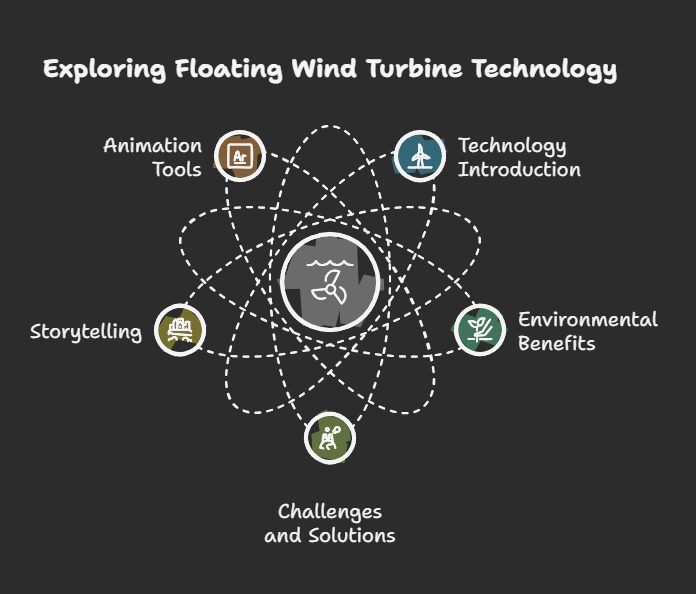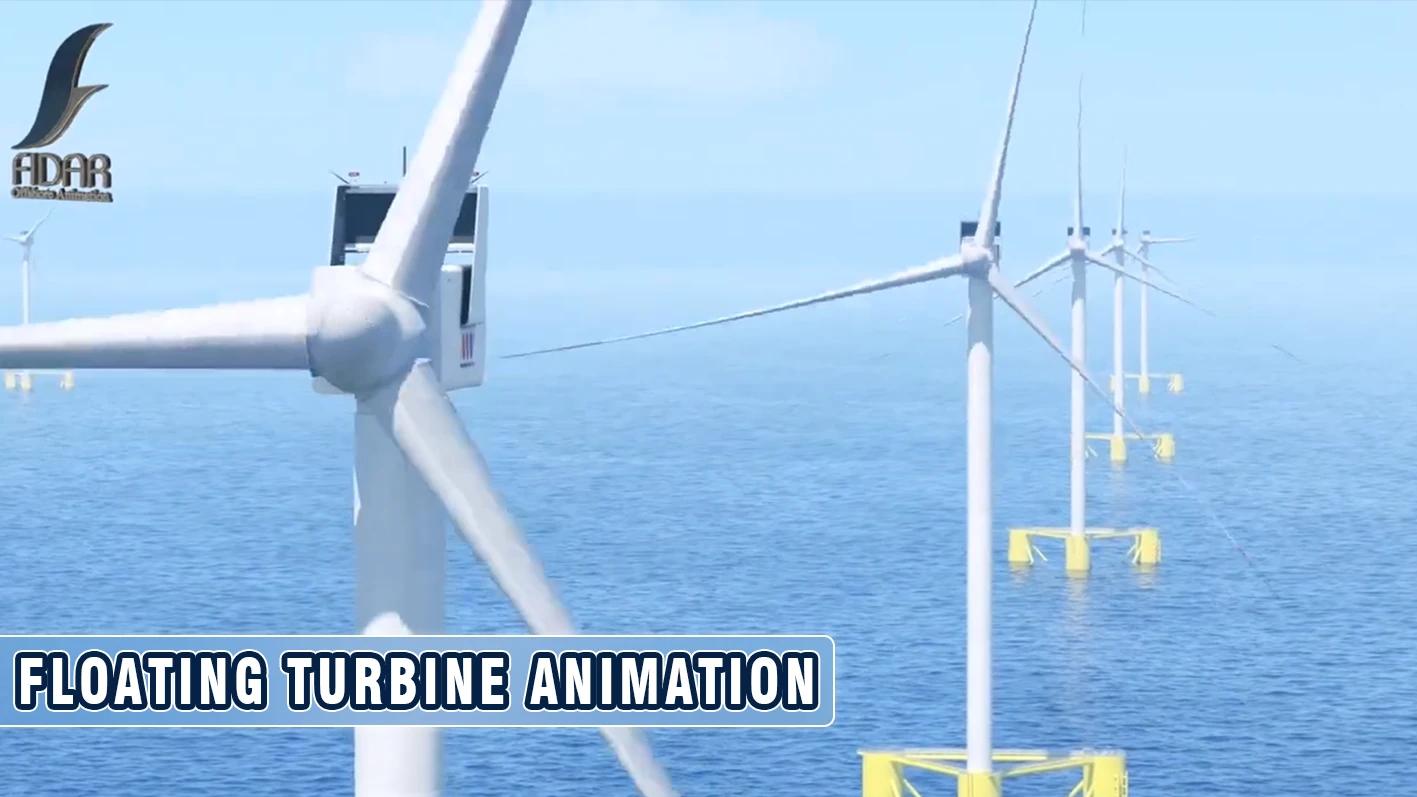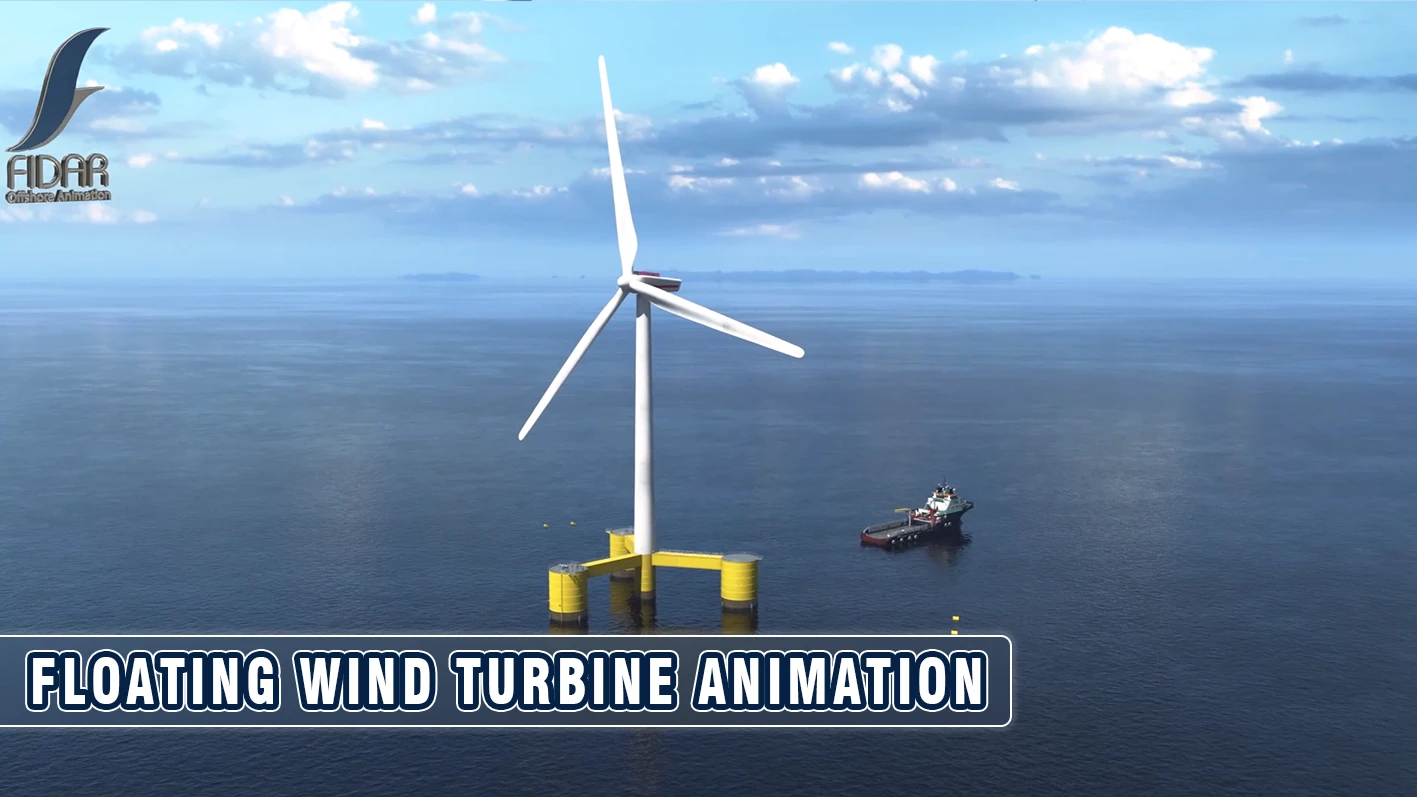The Floating Wind Turbine animation introduces the floating wind turbine and how it works in an attractive and dynamic way. The floating wind turbine is one of the new and leading technologies in the field of renewable and clean energy that has enabled the production of electricity in the deep waters of the seas and oceans. This technology, which is especially used in countries with deep coasts such as Japan, Spain and Portugal, and in addition to reducing the consumption of fossil fuels for sustainable electricity generation, also helps to combat climate change. The floating wind turbine animation introduces this specialized technology in a simple and understandable way for all segments of society.
What is a floating wind turbine?
A floating wind turbine is a type of offshore wind turbine that is installed on a floating structure and allows the production of electricity in the depths of the sea where the use of wind turbines with a fixed base is uneconomical or impossible. These turbines are usually installed in waters deeper than 50 meters and are connected to the seabed through mooring and anchor systems, and the floating wind turbine animation depicts the operation, components, and how electricity is generated through the turbines.
Features of floating wind turbines
• Flexibility in location: The ability to install in deep water makes offshore areas possible for wind energy production
• Reduced visual pollution: Being located further from the coast does not cause visual pollution.
• Access to stronger winds: Offshore winds are usually stronger and more stable, which increases the efficiency of electricity generation.
• Types of floating structures: Includes spar, semi-submerged, and tensioned base structures.
Floating wind turbine animation can show these features to the audience by showing special effects of floating structures, how they are moored, and the electricity generation process.

The Importance of Floating Wind Turbine Animation
Wind turbine animation is one of the important and vital tools in explaining the floating wind turbine and its function, which can be used in various fields such as education, marketing, product introduction, attracting investors, etc. These animations can be used for education:
1. Simplifies concepts by graphically displaying how turbines work, systems for harnessing and converting wind energy into electricity.
2. Attracts diverse audiences, from students to experts and policymakers, in different directions and purposes.
3. Increases environmental awareness by showing the benefits of renewable energy in reducing greenhouse gas emissions.
4. Uses storytelling and cartoon characters to create an emotional connection with the audience and create interaction.
Suggested content for floating wind turbine animation
You can use this suggested content to produce a floating wind turbine animation.
1. Introducing the technology by visually demonstrating a floating turbine at sea, explaining how it works, or introducing types of floating structures in the form of simple animations.
2. Demonstrating environmental benefits, for example, demonstrating carbon emission reduction and protection of marine ecosystems, or comparing floating turbines with fossil fuels in terms of environmental impacts, can also be effective.
3. Demonstrating challenges and solutions, showing challenges such as wave power and strong winds, and solutions such as advanced bracing systems, or explaining the role of scientific research in improving turbine design.
4. Storytelling and telling a story about a coastal community that uses floating turbines to generate clean energy, or using cartoon characters such as a seabird that tells the story of turbines, is also effective.

Tools for producing quality animation
The following tools can be useful for creating quality animation. At Fidar Animation Group, we use these tools to produce quality animations in this field to promote your business and make your brand visible in line with the needs of your target audience.
• Adobe After Effect: Used for professional 2D animations.
• Blender: Used for 3D modeling and animations of turbines and the marine environment.
• Powtoon or Toonly: Suitable for simple and educational animations for beginners.
• Cinema 4D: Used for advanced and realistic designs.
Floating wind turbine animation is an effective animation for education, raising awareness, contributing to a healthier environment, marketing and sales. Using attractive graphics and creative storytelling, these animations can both entertain audiences and achieve high rankings in search engines, leading to greater engagement and increased conversion rates. Producing animations that explain floating turbine technology in a simple and visual way not only helps in public education, but also helps in promoting sustainability and environmental protection and makes your business more prosperous. In addition, it is very effective in educating the general public and interacting with designers and engineers, and saving time and money. Fidar Animation with its specialized team is by your side to help you achieve your goals on this path, stay in touch with us. To see more samples of work, get in touch with our experts.
